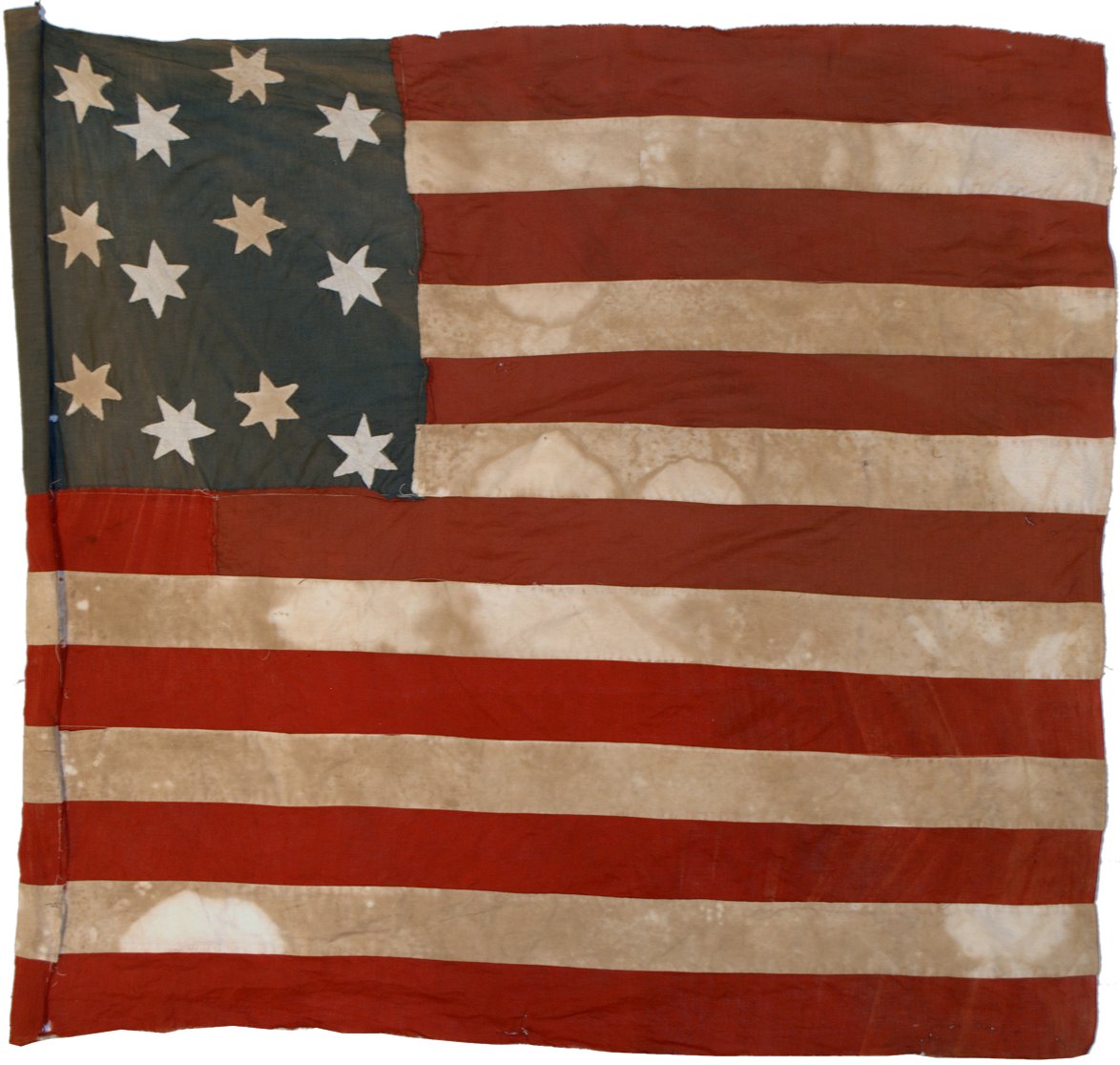|

Liberation flags made
predominantly in France and Belgium during World War II
collectively represent some of the folkiest
presentations of the American flag. They were made
under austere circumstances, from fabrics that were
make-do given the scarce materials at hand. They
were made by people who generally had an idea of what
the American flag should look like, but often times
didn't know the specific details such as the number and
pattern of the stars, the number of points on the stars,
or the number of stripes. The resulting flags they
produced to welcome liberating American soldiers in
their time of strife are both historically and visually
captivating. This particular example, found in
Baccarat, France in the Lorraine region near the German
border, has great folk qualities to it.
Immediately apparent are the folky six-pointed stars,
which are staggered across the canton. The use of
six-pointed stars on any American flag is very rare.
There are only 12 stars, but they fit the canton
perfectly and the flag maker was apparently content with
the results. The canton rests on the "blood
stripe", or "war stripe", which is another rare trait in
an American flag. It was most likely not
intentional, since such an esoteric piece of flag lore
would not have been common knowledge, especially as far
away as France. It simply was a matter of chance.
The use of a sleeve hoist is something I had not
encountered in a liberation flag until this example, but
it makes sense, given the scarcity of other materials
such as grommets, to simply use the fabric of the flag
itself to mount it on a wooden staff.
The significant soiling of
the flag is not from subsequent storage, but from the
the time when the flag was actually hanging. The
soil is not blackish, as I've encountered in some flags
that are attic stored, but brownish red clay. Two
columns of stars are soiled, while two are not, which is
unusual; perhaps indicating that some of the white
fabric was already stained and soiled before the flag
was made. Striations of soiling and fading radiate from
the top left corner of the canton, good indication that
the flag hung from a staff, and sunlight, soil and rain
fell on the flag for a prolonged period. One can
imagine columns of dust kicked up by allied columns of
vehicles as they streamed toward victory. |

